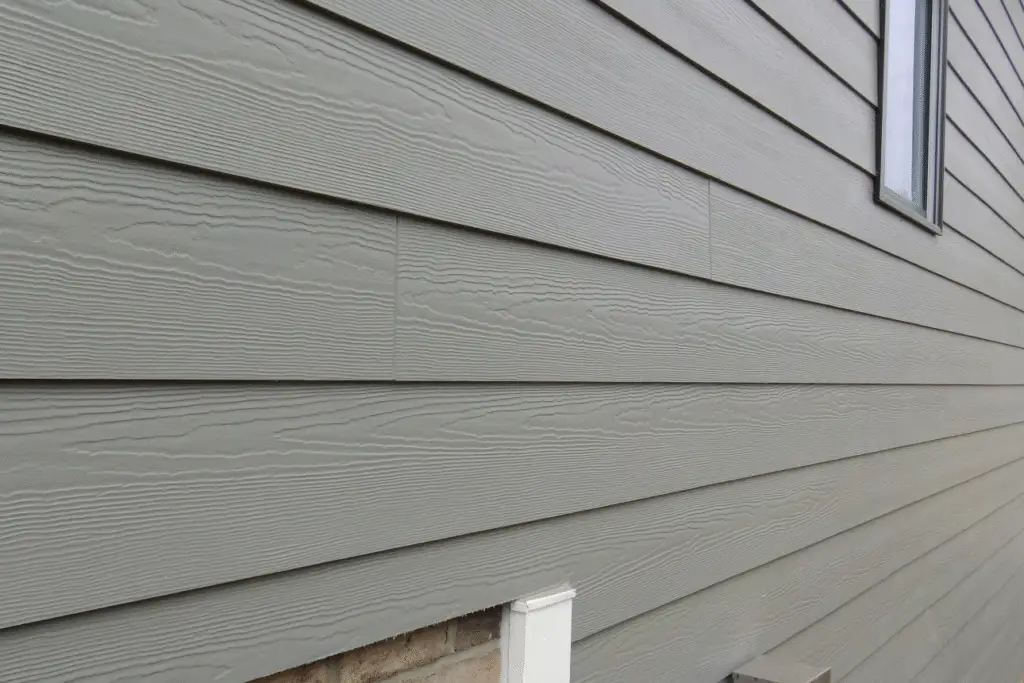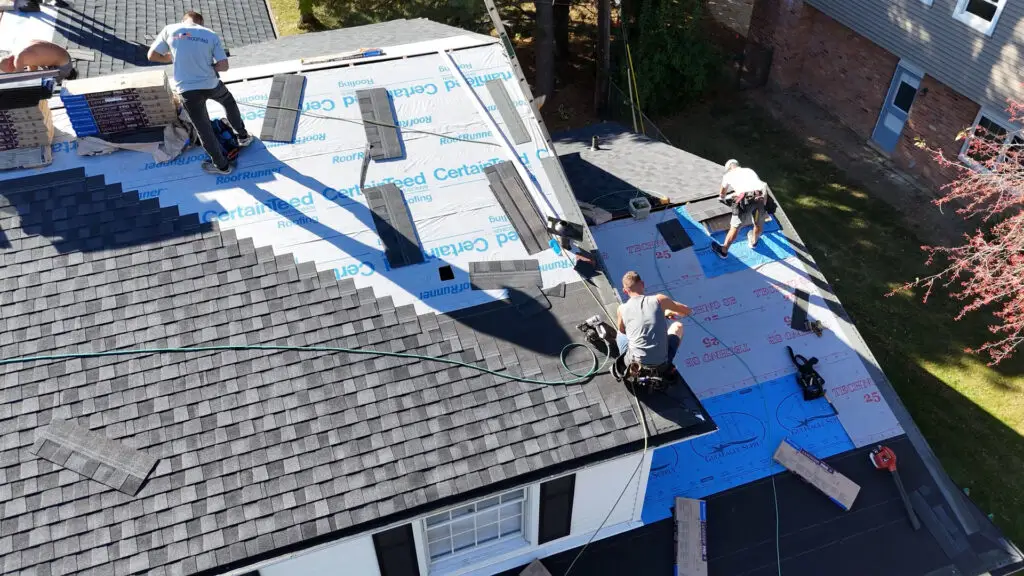Your home’s exterior says a lot—and clean, well-maintained siding plays a major role in both curb appeal and protection. If you’re wondering how to clean vinyl siding without damaging it or spending your entire weekend scrubbing, you’re not alone. Learning how to clean vinyl siding the right way can help you maintain its appearance and avoid damage. In this guide, we’ll walk through safe, effective cleaning methods, warning signs that your siding might need replacing, and how proper care can extend your siding’s life for years to come.
Why Vinyl Siding Care Matters
Regular siding care isn’t just about keeping your house looking nice (although that’s a big perk). It plays a vital role in protecting your home from the elements. Vinyl siding acts as a barrier against wind, rain, snow, and heat—and in Michigan, your home sees all four in full force.
If dirt, debris, or mildew are allowed to build up unchecked, they can trap moisture and lead to long-term damage. Cleaning your siding at least once a year helps prevent mold growth, protects the panels from warping, and maintains the integrity of your home’s exterior.
Additionally, consistent care allows you to spot early warning signs of deterioration before they lead to expensive repairs. A clean surface makes it easier to identify cracks, soft spots, or discoloration that might otherwise go unnoticed. Knowing how to clean vinyl siding properly also gives you a clearer view of wear-and-tear issues before they become costly.
How to Clean Vinyl Siding Without Causing Damage
If you’re unsure how to clean vinyl siding effectively, this step-by-step guide covers the basics and expert tips. Here’s a step-by-step guide for how to clean vinyl siding properly and safely:
1. Gather the Right Supplies
Skip the harsh chemicals and stick with a few basic tools:
- Garden hose with spray nozzle – strong enough to rinse, gentle enough not to damage
- Soft-bristled brush or long-handled brush – perfect for scrubbing without scratching
- Bucket of soapy water – use a mild detergent or a vinegar solution (⅓ cup white vinegar to 1 gallon water)
- Optional siding-safe cleaner – especially for mildew-prone areas or stubborn stains
2. Use the Bottom-Up, Top-Down Method
Start by scrubbing from the bottom up to prevent streaks, then rinse from the top down so water flows off cleanly. Work in manageable sections so the soap doesn’t dry before you rinse. This method is one of the safest when learning how to clean vinyl siding without streaks or water damage.
3. Be Cautious With Pressure Washers
While pressure washers can be effective, they also risk forcing water behind your siding if used incorrectly. Always use a wide spray setting and spray straight on—not upward. For best results (and peace of mind), consider hiring a professional like BCM Roofing to clean or assess your siding.
4. Don’t Skip the Details
Grime loves to hide in the corners—so pay extra attention to areas around windows, doors, gutters, and corners. Use a sponge or soft brush for tighter spots to get a thorough clean.
Areas Most Prone to Grime Buildup
Even if you know how to clean vinyl siding well, these trouble spots often need extra attention. Some parts of your siding may need extra attention. Focus on:
- North-facing walls (less sun = more mildew)
- Siding near landscaping (dirt splashback)
- Under roof overhangs and porch awnings
- Areas beneath leaky gutters or downspouts
BCM Roofing also offers gutter inspection and cleaning, which helps keep your siding looking its best. Overflowing or damaged gutters are a common culprit behind dirty, streaked, or rotting siding.
Signs Your Siding Needs to Be Replaced
While vinyl siding is built to last, it doesn’t last forever. Routine cleaning helps extend its life, but eventually, wear and tear will start to show—and it’s important to know when cleaning just isn’t enough.
Look for these common signs that it may be time to replace your siding:
- Cracks or Warping: Sun damage and harsh Michigan winters can cause siding to warp, split, or pull away from the house.
- Faded or Discolored Panels: UV rays break down siding over time, causing colors to fade and materials to weaken.
- Mold, Mildew, or Rot That Keeps Coming Back: Persistent growth even after cleaning may indicate moisture problems behind your siding.
- Loose or Missing Pieces: Gaps or holes in the siding can compromise your home’s energy efficiency and let pests inside.
- Skyrocketing Energy Bills: Damaged or aging siding can reduce insulation performance, making it harder to regulate indoor temperatures.
If you notice any of these signs, don’t wait. BCM Roofing offers expert siding inspections and replacement services throughout Michigan. We’ll give you an honest assessment and help you find the best solution for your home and budget.

How Regular Cleaning Extends the Life of Your Siding
One of the biggest advantages of knowing how to clean vinyl siding is being able to protect your home’s exterior from early deterioration. Vinyl siding is engineered to last 20–40 years, but how long it actually lasts depends heavily on how well it’s maintained. Annual cleaning prevents buildup that can accelerate material breakdown or hide serious issues like moisture damage.
In particular, removing algae, mildew, and pollutants protects the finish and prevents premature fading or staining. Dirt and grime left to sit on the surface can cause small abrasions that weaken siding over time—especially in areas exposed to full sun or moisture.
Regular cleaning also helps you stay ahead of costly problems. By inspecting your siding during routine cleanings, you’re more likely to catch small cracks, lifting panels, or insect activity early on. That means less money spent down the road and greater peace of mind knowing your home’s exterior is secure.
Routine cleaning is more than just a cosmetic fix. Here’s how it protects your home long-term:
- Prevents mold, mildew, and algae buildup, which can damage your siding over time
- Protects from staining due to dirt, pollen, or rust runoff
- Reduces premature fading by removing damaging pollutants
- Prevents moisture problems from clogged gutters or hidden buildup
- Preserves curb appeal and property value, making your home easier to sell down the road
Think of it like washing your car—you wouldn’t wait five years to do it, and your siding deserves the same care.
Siding Care Mistakes to Avoid
While learning how to clean vinyl siding is fairly straightforward, there are a few common mistakes that can do more harm than good. Let’s explore what to avoid when learning how to clean vinyl siding safely and effectively. To keep your siding in great shape, here’s what not to do:
Don’t Use High-Pressure Washing
It might be tempting to grab a power washer to speed things up—but pressure washing can damage vinyl siding if used improperly. The intense force of the water can loosen or crack panels, drive moisture behind the siding, or strip off protective coatings. If you do use a pressure washer, make sure to:
- Use the lowest pressure setting possible
- Stand at a downward angle
- Keep the nozzle moving to avoid concentrated damage
- Follow manufacturer guidelines or consult a pro
When in doubt, a garden hose and long-handled brush are safer, more effective options for routine siding maintenance.
Avoid Harsh Chemicals or Abrasive Scrubbers
Strong cleaners like bleach, acetone, or ammonia can fade vinyl siding and damage the finish. Likewise, steel wool or hard-bristle brushes can scratch the surface, making it more vulnerable to future stains or deterioration. Stick to a gentle mix of water and mild soap—or use a siding-safe cleaner recommended by your contractor. Even if you’ve researched how to clean vinyl siding, some common cleaners may seem safe but aren’t suited for long-term use.
Don’t Overlook Nearby Heat Sources
Believe it or not, grills placed too close to your home can warp or melt vinyl siding. Be mindful of where you cook out or place heat-generating equipment near your exterior walls.
Avoiding these common mistakes is just as important as learning how to clean vinyl siding the right way.
When to Call BCM Roofing
If you’re unsure how to clean vinyl siding safely or you spot potential damage, our team can assess the situation and help you decide what’s next. At BCM Roofing, our team offers comprehensive exterior assessments—including siding, gutters, and roofing—to help you make informed decisions. We won’t upsell you on something you don’t need, and we’re happy to walk you through your options.
Ready for a refresh? Let us take care of the exterior so you can enjoy your summer.
FAQs About Vinyl Siding Care
How often should I clean my vinyl siding?
Most homes benefit from a full siding cleaning once a year, ideally in late spring or summer. If your house is near trees, a dusty road, or prone to mildew, you may want to clean twice a year.
Can I use bleach on vinyl siding?
Yes, but with caution. A diluted bleach solution (⅓ cup bleach to 1 gallon of water) can remove mold and mildew, but make sure to rinse thoroughly. Never mix bleach with other cleaners, and avoid prolonged exposure on colored siding.
What’s the safest cleaner for vinyl siding?
A mix of water and mild dish soap or vinegar is usually safe and effective. For tough stains, look for a siding-specific cleaner labeled as non-toxic and safe for vinyl.
Is it better to clean siding with a brush or pressure washer?
A soft brush is safest and most controlled. If using a pressure washer, choose a low setting and spray head-on. Pressure washing at the wrong angle or too close can force water behind the siding and cause damage.
What’s the lifespan of vinyl siding with regular maintenance?
Properly maintained vinyl siding can last 20–40 years or more, depending on the quality of the materials and your local climate. Regular cleaning and early repairs are key to getting the most from your investment.
How do I know if my siding needs professional attention?
If you notice cracking, warping, loose panels, or mold that keeps returning, it’s time to call a professional. BCM Roofing can evaluate your siding, provide honest feedback, and offer repair or replacement options tailored to your home.


